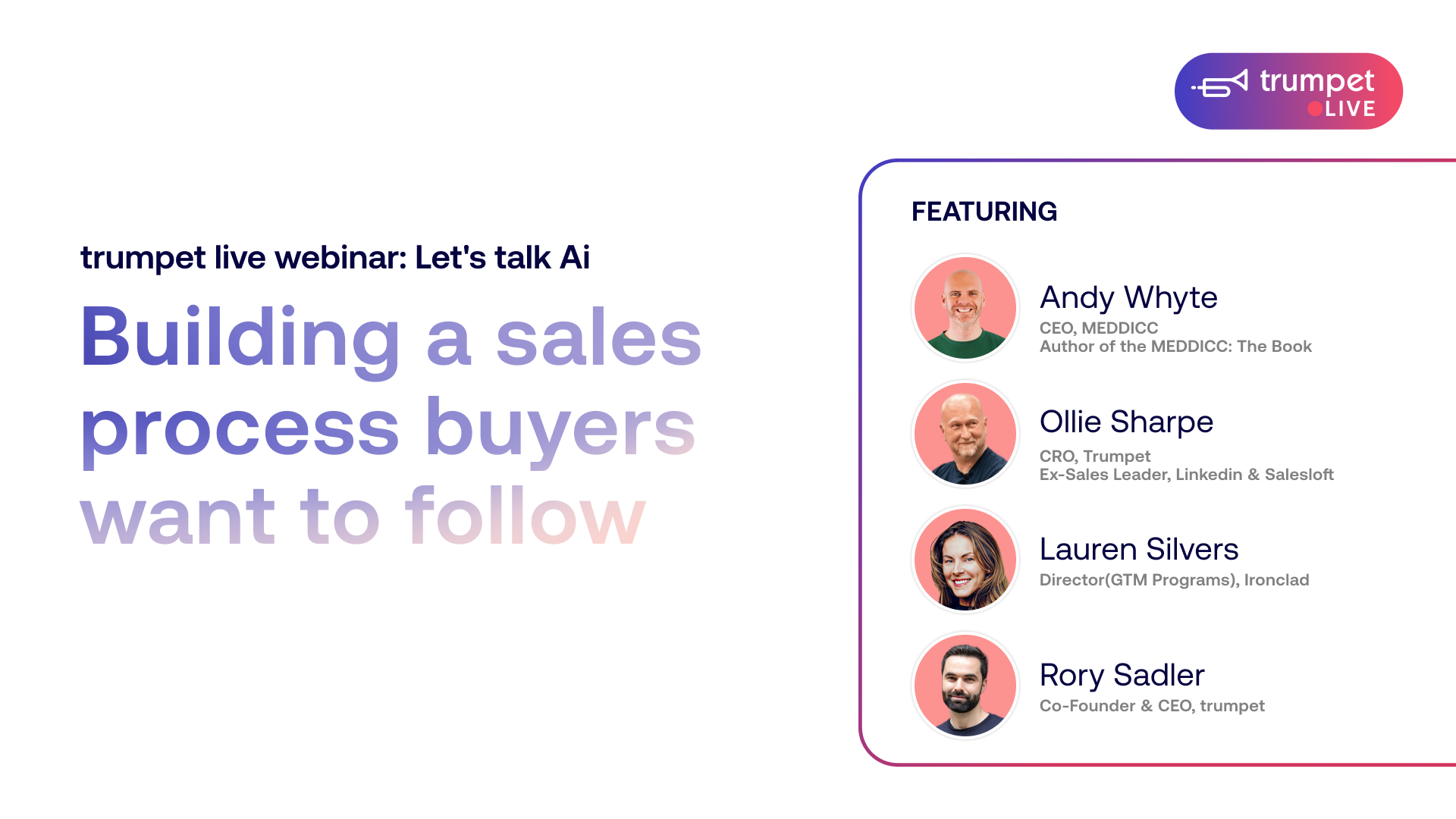Key takeaways:
- Buyers want structure, but not bureaucracy. Frameworks like MEDDICC help sellers qualify opportunities and help buyers make better decisions.
- Sales isn’t just external. Cross-functional alignment is key. Legal, RevOps, and Marketing all play a role in moving deals forward.
- Every step should reduce friction. If your process adds complexity instead of clarity, you’re creating drop-off points.
- Champion enablement matters. Internal advocates need the right tools to sell when you're not in the room.
Buyers don’t wake up thinking about your sales process (or at least they don't want to) They care about solving their problems, hitting their goals, and avoiding risk.
That’s the core message from our trumpet live, where we were joined by:
- Andy Whyte, CEO of MEDDICC
- Ollie Sharpe, CRO at trumpet
- Lauren Silvers, Director of GTM Programs at Ironclad
- Hosted by Rory Sadler, CEO of trumpet
Together, they unpacked what makes a sales process actually work from the buyer’s side of the table.
Themes that came up again and again:
- Buyers want simplicity, not confusion. A structured, transparent sales process shows that you understand their challenges and are ready to solve them.
- Internal alignment matters. Deals fall through when internal teams aren't in sync or when champions aren’t properly enabled to sell internally.
- AI can help or hurt. While it boosts efficiency, poorly applied AI is easy to spot. As Rory Sadler shared:
“You can tell when something's written by AI. The quicker the buyer spots it, the quicker they'll lose trust.”
In 2025, that trust is everything.
- Champion enablement is a must. If your buyer can’t sell your solution internally, the deal won’t move. Digital Sales Rooms like trumpet help centralise everything a champion needs from business cases to ROI tools - in one link.
If your sales process doesn’t help the buyer win, it’s not working.
The sales process isn’t just your playbook.
It’s the buyer’s journey and it’s your job to make following it the easiest option.















![How to Get Started with Buyer Enablement [With Examples]](https://cdn.prod.website-files.com/65cf4fecbed2754c2236665d/65cf4fecbed2754c22366bdb_65a5af83e742f76e34ce06f3_Customer%2520Onboarding%2520_%2520Everything%2520you%2520need%2520(2).png)
.png)



.png)



.png)












.png)


.png)


.png)
.png)







